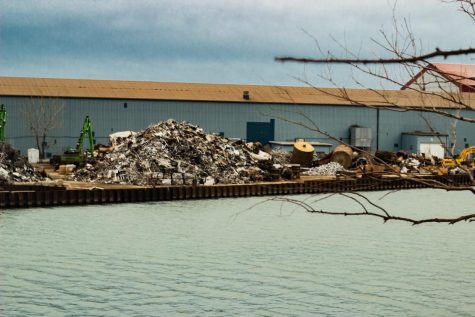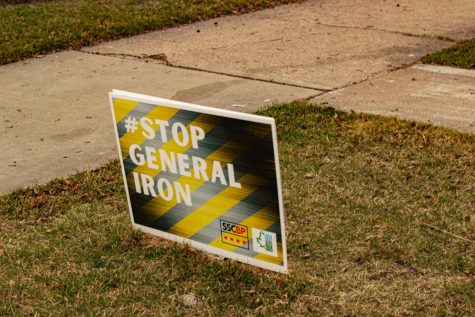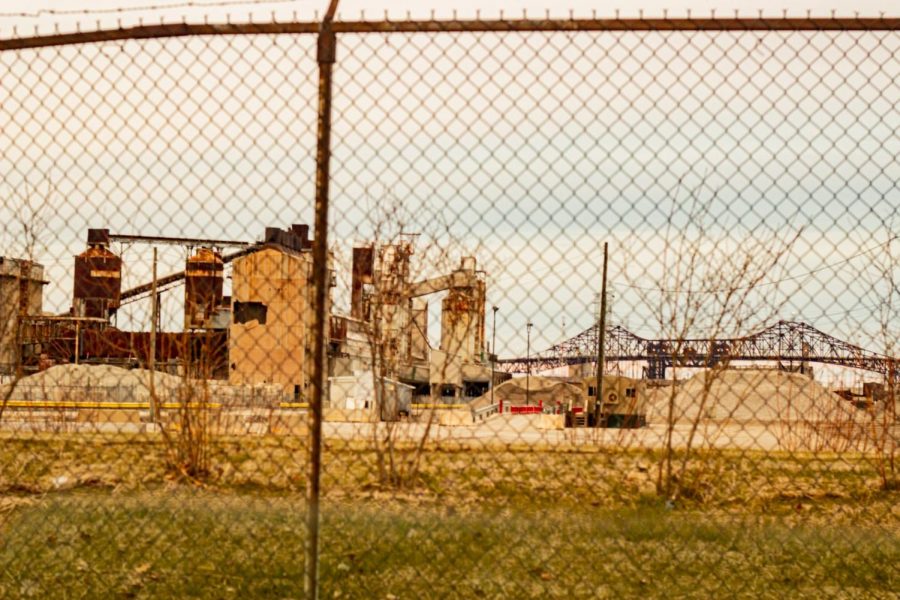For about as long as Reserve Management Group has attempted to move metal-scrapping facility General Iron from Lincoln Park to the Southeast Side, activists and commonfolk near the proposed location have vehemently opposed their efforts.
On May 7, after the head of the U.S. Environmental Protection Agency “strongly recommended” Mayor Lightfoot halt the permitting process to allow for a thorough analysis on potential health impacts to the community, Lightfoot immediately agreed, indefinitely delaying the permit.
“My initial reaction was surprise, because we didn’t expect that kind of involvement from the EPA,” said Peggy Salazar, director of the Southeast Environmental Task Force. “But once you get past that, then you’re wondering, ‘Okay, what’s going on? Is this just an attempt to stall, or to placate the community? Or are they serious about stepping in and making sure that the right thing is done?’”
Environmental justice advocates, like Salazar, have highlighted General Iron’s proposed move as a brazen example of environmental racism, noting a pattern of industrial facilities being moved from whiter, wealthier communities to more impoverished Black and Brown communities.
“They’re revitalizing the North Side,” Salazar said. “What are they doing on the South Side? The South Side, apparently, was to accommodate the revitalization but not participate in it. So, we felt like, how unjust is that? We’re a post-industrial area, and if anybody needs revitalization, it’s our community.”
Mark Potosnak, chair of DePaul’s Department of Environmental Science and Studies, said that because of Chicago’s history as an industrial city, many of these facilities were located in communities on both North and South Sides. However, as more North Side communities grew wealthier, industry was pushed out for redevelopment as the South Side was left out.
“The clincher is when there’s this process, like with General Iron, where they stay in the city because the city wants these industries — they want the jobs to remain — so they actually work out deals like, ‘You can’t stay in Lincoln Park — where are you going to go?’” Potosnak said. “They end up in Black and Brown communities more often than not.

It’s not just Chicagoans that have taken notice, however — two separate federal investigations, conducted by the EPA and the U.S. Department of Housing and Urban Development, are currently looking into whether Chicago’s zoning and land use practices violate Southeast Side residents’ civil rights under the Fair Housing Act after a series of community activists petitioned for greater scrutiny of the city’s actions.
Still, activists say sufficiently addressing environmental racism must go beyond one scrapping facility.
Sandwiching the Southeast side are two separate Superfund sites containing toxic waste such as lead, arsenic and slag that contaminates surrounding soil and groundwater. Within the Southeast side, a plethora of industrial plants continue to pump particulate matter into the region’s air. And on the West Side, Little Village residents have alleged that environmental racism played a role in city officials approving permits for Hilco contractors to demolish a smokestack in the region — a decision that ultimately blanketed several blocks of the neighborhood in dust amidst the Covid-19 respiratory pandemic.
There’s also one growing issue expected to disproportionately impact both neighborhoods in a variety of damaging ways: climate change.
“We’re already seeing the impact,” said Heather Smith, an adjunct geography professor at DePaul. “For example, flooding. When you map out flooding insurance claims, it’s primarily in Black and Brown communities.”
The Center for Neighborhood Technology, a non-profit organization dedicated to sustainable development in Chicago, did exactly that. The results are striking: 87 percent of all claims used in the dataset were in communities of color.

Another critical issue of climate change expected to particularly impact Black and Brown neighborhoods not just in Chicago, but across the United States, is heat.
A 2019 study of 108 urban areas in the U.S. highlighted that on average, neighborhoods that once fell victim to redlining are now five degrees hotter in the summer than areas that were viewed as optimal for housing loans. Larger amounts of open asphalt and far fewer trees greatly contribute to these “heat islands.” As these neighborhoods still tend to house lower-class Black and Brown individuals at high rates, and as climate change creates both hotter and longer summers — with a recent study suggesting summers may last as long as six months by 2100 — the brunt of these longer and stronger heat waves will likely be thrown onto already marginalized communities of color.
Salazar notes that while awareness of environmental racism has grown, change must follow.
“It’s taken many years to call attention to it, but it’s starting to [be recognized],” Salazar said. “It’s about us being overburdened versus others who don’t have to be bothered with it at all. All these things exist, but only a few people have to deal with the burden.”
Still, she adds that the fight goes on.
“We’re not going away,” she said. “Our organization’s definitely not going away.”



